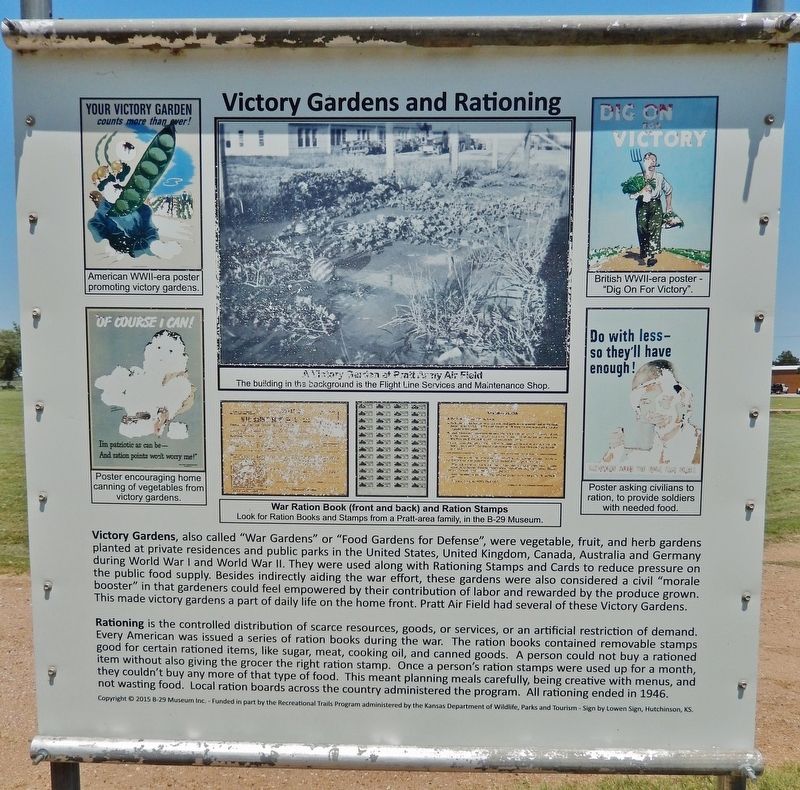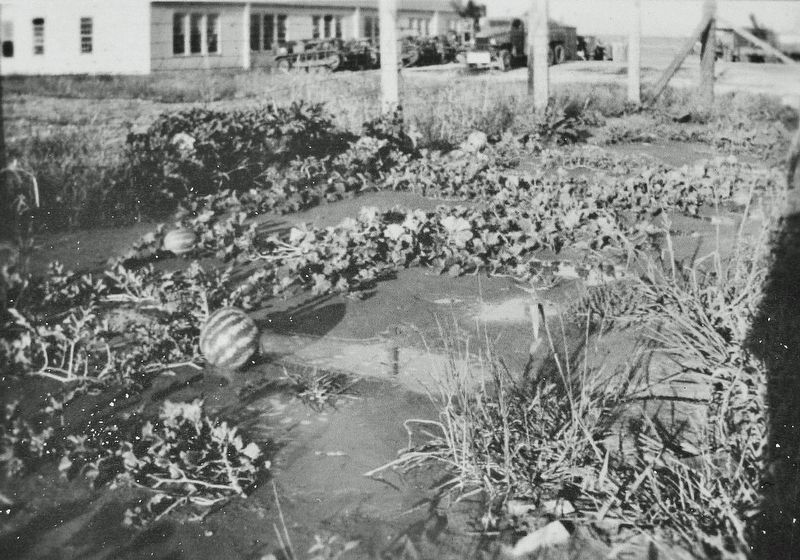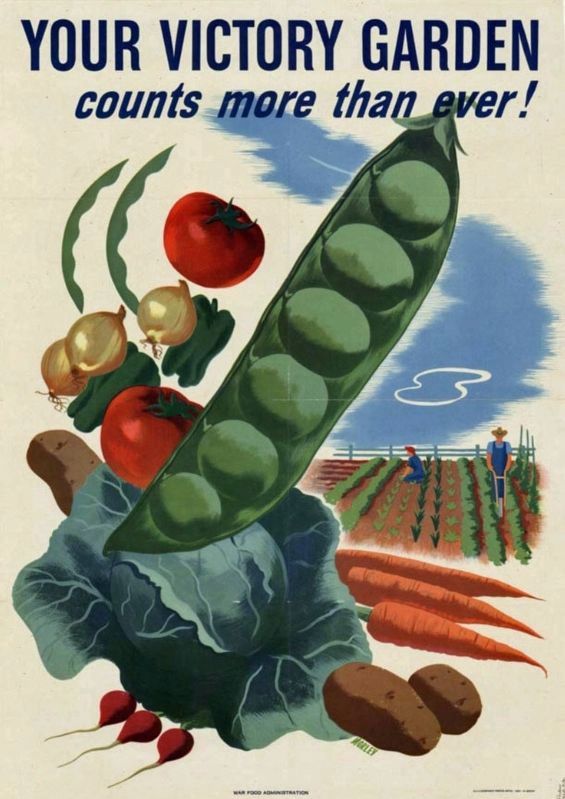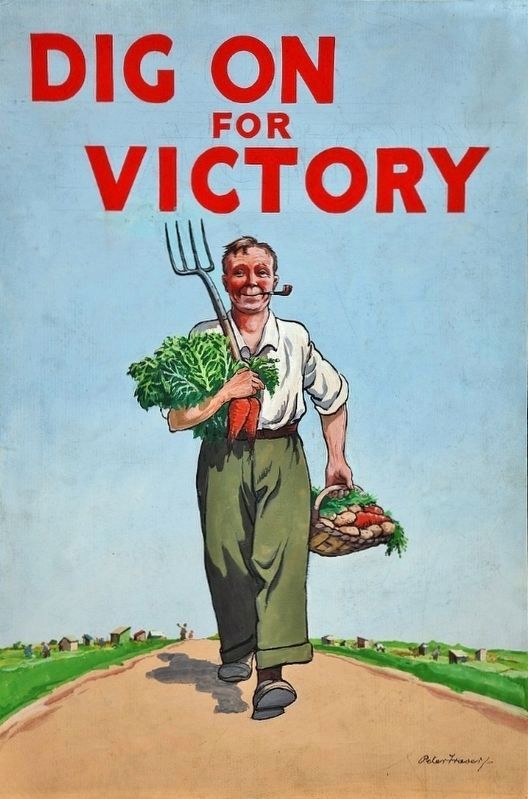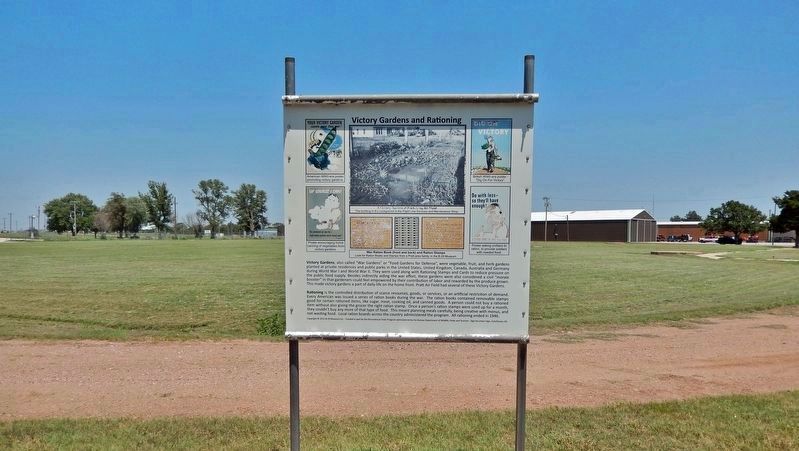Pratt in Pratt County, Kansas — The American Midwest (Upper Plains)
Victory Gardens & Rationing
Victory Gardens, also called "War Gardens" or "Food Gardens for Defense", were vegetable, fruit, and herb gardens planted at private residences and public parks in the United States, United Kingdom, Canada, Australia and Germany during World War I and World War II. They were used along with Rationing Stamps and Cards to reduce pressure on the public food supply. Besides indirectly aiding the war effort, these gardens were also considered a civil "morale booster" in that gardeners could feel empowered by their contribution of labor and rewarded by the produce grown. This made victory gardens a part of daily life on the home front. Pratt Air Field had several of these Victory Gardens.
Rationing is the controlled distribution of scarce resources, goods, or services, or an artificial restriction of demand. Every American was issued a series of ration books during the war. The ration books contained removable stamps good for certain rationed items, like sugar, meat, cooking oil, and canned goods. A person could not buy a rationed item without also giving the grocer the right ration stamp. Once a person's ration stamps were used up for a month, they couldn't buy any more of that type of food. This meant planning meals carefully, being creative with menus, and not wasting food. Local ration boards across the country administered the program. All rationing ended in 1946.
Copyright © 2015 B-29 Museum Inc. - Funded in part by the Recreational Trails Program administered by the Kansas Department of Wildlife, Parks and Tourism - Sign by Lowen Sign, Hutchinson, KS.
Erected by Kansas Department of Wildlife, Parks and Tourism; B-29 Museum; City of Pratt; and Airport Authority.
Topics. This historical marker is listed in these topic lists: Charity & Public Work • Patriots & Patriotism • War, World II.
Location. 37° 42.027′ N, 98° 44.528′ W. Marker is in Pratt, Kansas, in Pratt County. Marker is on Kennedy Avenue just west of Barker Avenue, on the left when traveling west. Marker is located along the Pratt Army Air Field Historical Walk, about 1 block north of the B-29 Bomber Museum. Touch for map. Marker is at or near this postal address: 82 Curran Road, Pratt KS 67124, United States of America. Touch for directions.
Other nearby markers. At least 8 other markers are within walking distance of this marker. Historical WW II Parachute Building (about 300 feet away, measured in a direct line); Sub-Depot Hanger (Hanger #1) (about 300 feet away); The Battle of Kansas (about 400 feet away); Norden Bombsight Vaults (approx. ¼ mile away); The City of "PAAF-Ville" (approx. ¼ mile
away); Base Operations Building (approx. ¼ mile away); Aircraft Control Tower (approx. ¼ mile away); Link Aviation Flight Simulation Trainer (approx. ¼ mile away). Touch for a list and map of all markers in Pratt.
Related markers. Click here for a list of markers that are related to this marker. Pratt Army Air Field Historical Walk
Also see . . .
1. Victory Garden at the National Museum of American History. Excerpt:
Victory gardens were vegetable gardens planted during the world wars in order to ensure an adequate food supply for civilians and troops. Government agencies, private foundations, businesses, schools, and seed companies all worked together to provide land, instruction, and seeds for individuals and communities to grow food. Throughout the World War II years, millions of victory gardens in all shapes and sizes produced abundant food for the folks at home. While the gardens themselves are now gone, posters, seed packets, catalogs, booklets, photos and films, newspaper articles, diaries, and people’s memories still remain to tell the story of victory gardens.(Submitted on August 9, 2023, by Cosmos Mariner of Cape Canaveral, Florida.)
2. Victory Garden. Excerpt:
Eleanor Roosevelt planted a Victory Garden on the White House lawn in 1943. The Roosevelts were not the first presidency to institute a garden in the White House. Woodrow Wilson grazed sheep on the south lawn during World War I to avoid mowing the lawn. Eleanor Roosevelt's garden instead served as a political message of the patriotic duty to garden, even though Eleanor did not tend to her own garden. While Victory Gardens were portrayed as a patriotic duty, 54% of Americans polled said they grew gardens for economic reasons while only 20% mentioned patriotism.(Submitted on August 9, 2023, by Cosmos Mariner of Cape Canaveral, Florida.)
Credits. This page was last revised on August 9, 2023. It was originally submitted on August 8, 2023, by Cosmos Mariner of Cape Canaveral, Florida. This page has been viewed 61 times since then and 11 times this year. Photos: 1, 2, 3, 4, 5, 6. submitted on August 9, 2023, by Cosmos Mariner of Cape Canaveral, Florida.
